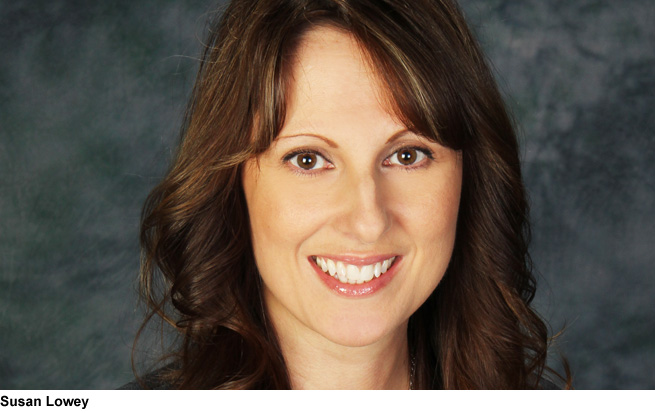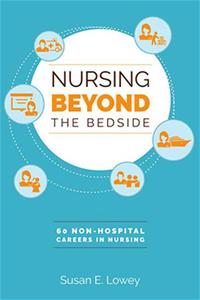In teaching the science of nursing, also teach the art of nursing.
 As new courses are added to educational curricula, nurse educators need to continue preparing students for success not only clinically but also relationally and ethically.
As new courses are added to educational curricula, nurse educators need to continue preparing students for success not only clinically but also relationally and ethically.
As of 2014, there were 1,869 undergraduate nursing education programs—baccalaureate, associate degree, and diploma—in the United States. Regardless of type, curricula are packed full of content to help ensure that future nurses are safely and effectively prepared. In the past few years, however, as more and more curricular requirements have been added, some of the basics essential to the art of nursing have been lost.
With time, nursing education has become more diverse to provide more options—for example, accelerated programs and baccalaureate completion programs for nurses with associate degrees—but traditional programs aimed at recent high school graduates continue to be among the most sought after. One potential drawback of such a program, however, is students’ youthfulness; they may lack the life experiences essential to working effectively as a healthcare professional.
The art of nursing and socialization into the profession
I do not mean to convey the idea, however, that the average young-adult nursing student is immature. In fact, a fair level of maturity and fortitude is required to complete the prerequisite nursing and clinical coursework.
Jenner defines the art of nursing as the use of oneself to transmit meaning to another person. It requires active participation, sensitivity, imagination, and interpretation. The educational component is only one part of a nursing student’s preparation to function effectively in the discipline. Another part of the process—socialization into the profession—takes place throughout nursing school. It includes purposeful molding of students into their roles as professional clinicians by learning about and acquiring the nine attributes or provisions outlined in the American Nurses Association Code of Ethics. These attributes include, among others, compassion, respect, accountability, responsibility, and integrity. The purpose of nursing education is to foster both the art and the science of nursing in our students. Although we often focus on building competence through science, an emphasis on inculcating the art of nursing should not be overlooked.
Despite lack of experience resulting from youthfulness or societal changes that influence the mores of the younger generation, it is essential that we not lose what I call the basics of nursing—attributes such as honesty and integrity, the ability to talk with people, maintaining a professional image, being prepared for both good days and bad days, and thinking creatively. Nursing has demonstrated profound growth over its long history—at the bedside and in the boardroom. As educators and leaders, it is our duty to ensure that the next generation of nurses continues to develop and enhance this great profession.
Tip No. 1: Promote and model honesty and integrity
For 16 years in a row, the public continues to rate nurses highest among all professions when it comes to honesty and ethical standards. Nurses have earned a high level of trust. It is essential, therefore, that nurse educators continue to promote and model honesty and integrity, reinforcing these attributes with our actions and expectations.
Practicing academic honesty is one way to ensure that we retain our profession’s high level of integrity. Students must be held to high academic standards throughout nursing school and beyond. Cheating, plagiarism, or falsification of information or medical documentation must never be tolerated. Educators can serve as role models by following through with enforcement when punitive actions, which may include dismissal, are needed for students found to be in violation. Students need to have a firm understanding of these expectations and be held accountable. Those who lack this understanding are not ideal candidates for the profession of nursing.
Tip No. 2: Help students develop communication skills
This tip may seem obvious, but I think mastery of communication skills receives less emphasis in nursing education than it used to. I remember taking a required course that was designed to teach and foster effective communication. Everything a nurse does in the clinical setting involves communication. Whether verbal or written, it’s foundational to our practice. Not all students who enter nursing school are comfortable or confident in their communication skills. Nursing programs should place great emphasis on effective nurse-patient communication as well as communication with other healthcare clinicians. We often emphasize the importance of speaking with our patients rather than to them but often fail to teach how to do this.
While it is true that good communication skills often come with experience and can be difficult to teach, there are ways that educators can foster them. One way is to incorporate teaching these skills into every course, particularly clinical courses. Include key aspects of communicating with specific patient populations. Give students the opportunity to develop communication skills with partners or in a small group setting.
Effective communication starts with excellent listening. Here’s a simple exercise that takes only a few minutes and can easily be done with students in a classroom setting. Divide students into pairs—ideally with classmates they do not know well—and assign each student to be either the speaker or listener. Instruct the speakers to describe a loss that they have encountered in their lives, and instruct the listeners not to verbally respond. Give them three minutes to complete this task. Afterward, lead a discussion about what it takes to be a good listener and about effective use of nonverbal communication.
Tip No. 3: Show them how to dress professionally
Effective nurse-patient relationships are built on trust and effective communication. One way to continue promoting public confidence in our profession and enhance our image as nurses is to maintain proper standards with regard to appearance. Studies suggest that patients want nurses to appear professional and be identifiable in the clinical setting, with patients and nurses alike preferring white over color-coded uniforms. Although most nursing programs have strict guidelines for student uniforms and personal appearance, they often differ from what students observe in clinical practice settings.
What practicing nurses wear varies widely. In the interest of recognizing individual rights, there is often less emphasis on rules that may seem to infringe on individualism. It is important to provide for individual expression, but it’s also important to convey a sense of security and trust to the public. In the future, younger patients may not have a problem when a nurse is adorned with a plethora of piercings or tattoos. This does not, however, describe the majority of patients today, many of whom are older adults. While it is imperative that our profession continues to develop and progress over time, this does not mean that we should abandon professionalism, which the public gauges in part by our appearance and image. Nurse educators have an obligation to uphold dress codes and should model these expectations through their own appearance in the clinical setting.
Tip No. 4: Help prepare them for the bad days
One way to help students make a connection between content they are being taught and patients they will care for as nurses is interjecting into classroom lectures real-life examples of clinical scenarios. Students enjoy hearing stories about real patients and how our interactions and interventions have positively impacted them. Less emphasized in nursing school are the patient encounters that did not go well or as smoothly as they should have.
It is important for students to learn about these less positive encounters, so they will be prepared when they encounter similar situations in practice. What do you say to a patient who is visibly upset after being told that he or she has cancer? How should you respond to a patient who is screaming obscenities at you? Nursing school is difficult, but it doesn’t compare to the difficulties that licensed professional nurses encounter when they are 100 percent responsible for a patient caseload. In the real world of clinical practice, there is no instructor beside you and no lighter patient load or assignment, and it seems that the weight of the world is upon you.
Nurse educators provide a disservice to their students when they fail to expose them to realities they may encounter in the practice setting. These disclosures should be done gradually and in good taste, as we need to strike a balance between being a supportive role model and sharing small doses of the burdens that a professional nurse will experience. In the United States, this is particularly important to convey to current young-adult nursing students, who historically have been more sheltered from hardship and negativity than previous generations.
Tip No. 5: Help them learn to think creatively
The art of nursing, writes Jenner, includes imagination and interpretation. This observation is at odds with much of current primary and secondary education in the United States, which often discourages creativity and thinking outside the box. An 8-year-old student may have an idea about what he or she wants to write or draw but is constrained by the system’s curricular rules. Similarly, nursing students may be constrained by rigid rules that are intended to ensure competence and safety but snuff out creativity.
Nurses need to think creatively when caring for patients. If an intervention is not working or not being delivered in the way it should, the art of nursing encourages us to adapt or tailor it to the individual. Nurses who have not been trained to think creatively are unable to provide patient care that is not only safe and competent but also individualized and holistic. Nurse educators should seek to foster creative thought through class assignments and discussions. Students should be informed about the multitude of career options they have in the profession, some of which may be a much better fit for them than the traditional inpatient care setting.
Qualified students often drop out because they cannot envision themselves working in a hospital. Sigma’s Nursing Beyond the Bedside: 60 Non-Hospital Careers in Nursing can be a great place for nursing students to start exploring options and learning about qualifications needed for various outpatient nursing jobs. RNL
 Susan E. Lowey, PhD, RN, CHPN, associate professor in the Department of Nursing at The College at Brockport, State University of New York, is the author of Nursing Beyond the Bedside: 60 Non-Hospital Careers in Nursing, published by Sigma. For more than 25 years, Lowey has worked as a clinician, researcher, and educator focusing on improving care for patients at the end of life. She has presented her work at numerous national professional conferences and in healthcare publications.
Susan E. Lowey, PhD, RN, CHPN, associate professor in the Department of Nursing at The College at Brockport, State University of New York, is the author of Nursing Beyond the Bedside: 60 Non-Hospital Careers in Nursing, published by Sigma. For more than 25 years, Lowey has worked as a clinician, researcher, and educator focusing on improving care for patients at the end of life. She has presented her work at numerous national professional conferences and in healthcare publications.